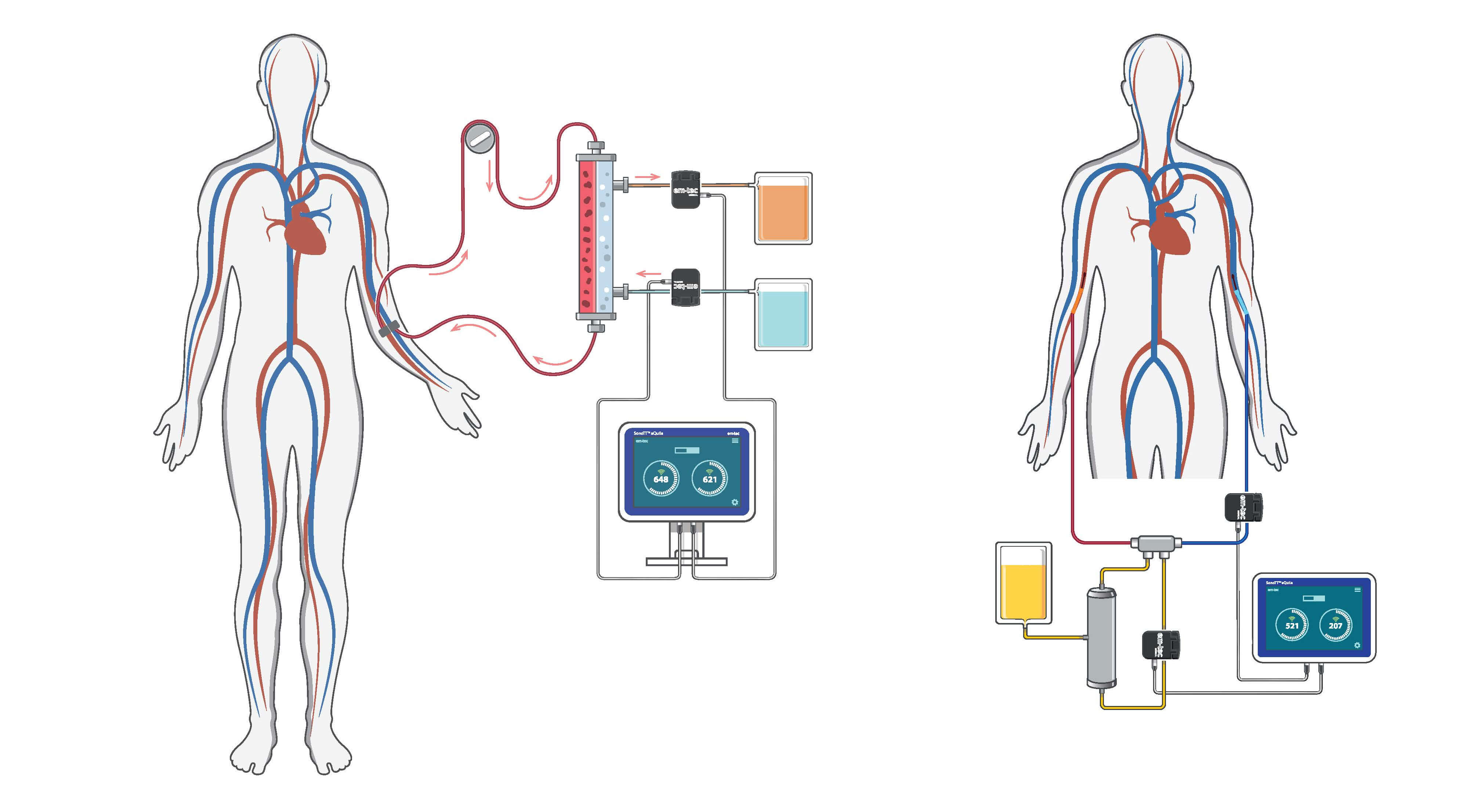5. Applications:
Dialysis & Apheresis
During both dialysis and apheresis
treatments, the blood is filtered of unwanted
components. Yet, while blood
flow plays a big role in both of those
applications, a flow measurement
solution is not usually part of them.
With the the SonoTT™ aQuila System
and the flow values it provides, flow rates
can be documented and the overall treatment can be evaluated.
